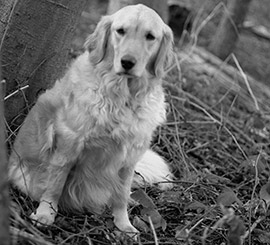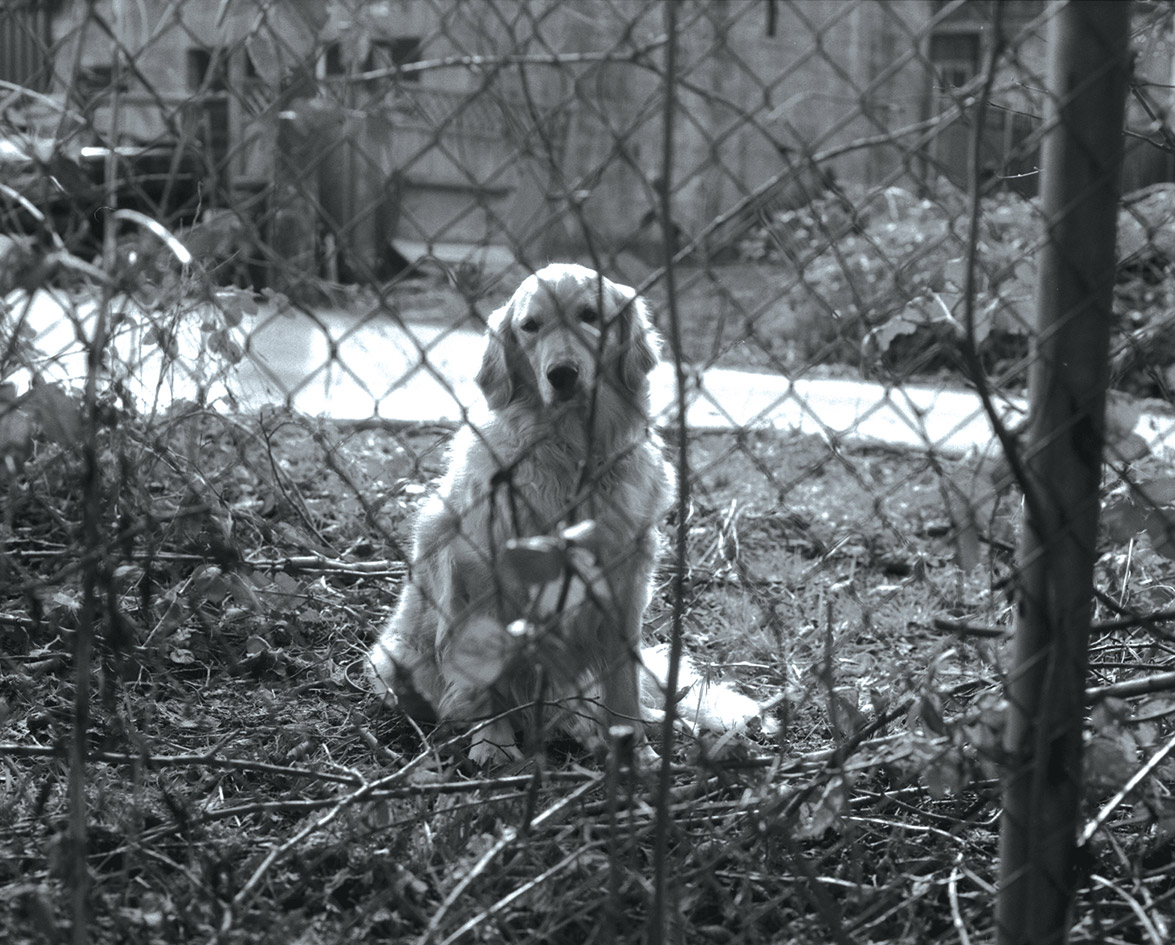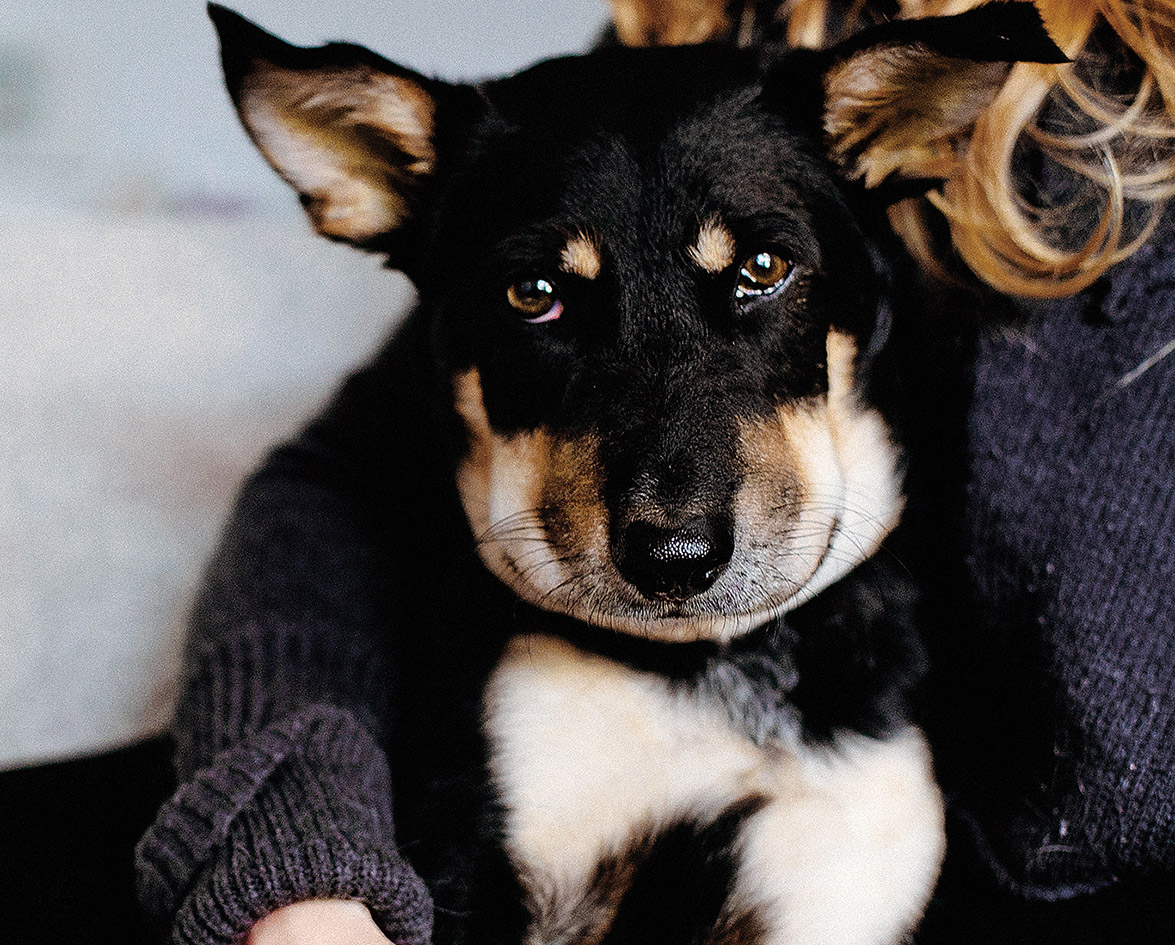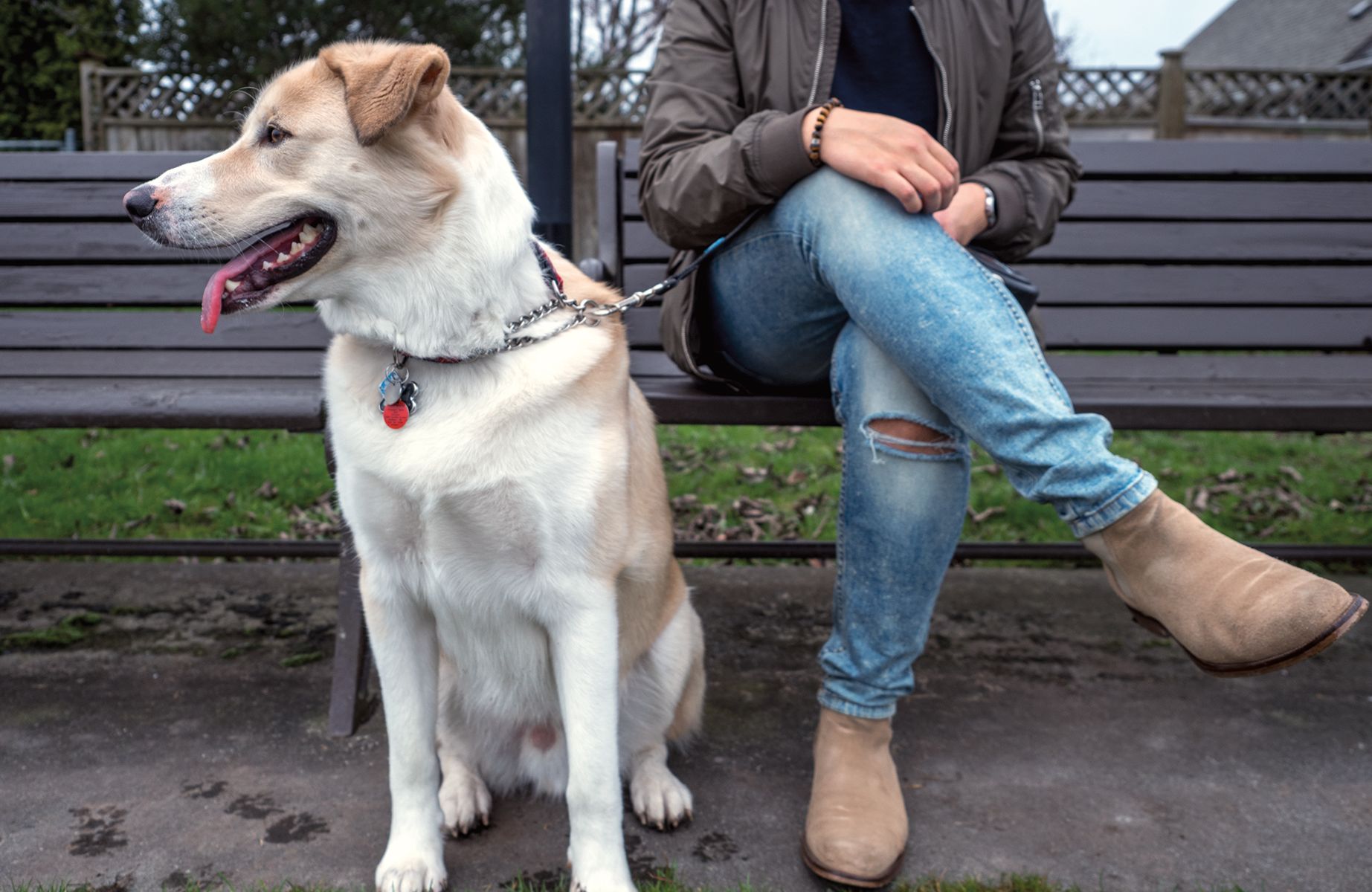When animal control officers responded to a noise complaint, Skye, a collie puppy, was liberated. In the house with Skye were 11 dead collies. Their owner had sealed the windows and doors of his house and moved away; the dogs had slowly starved to death. Janet Lamont, of Okanagan Collie Rescue in Kelowna, saved Skye and two other puppies from the boarded-up house.
Leaving Rover Behind
Heartbreaking as it is, there are many reasons why people abuse and abandon their pets. Vancouver area rescuer of Miniature Pinschers and Shiba Inu, Mia Riback says, “People pick small dogs for their size, without considering their unique temperaments.” Size is not a measure of the amount of care needed. For instance, a Jack Russell Terrier needs more exercise and living space than a Great Dane.
People are unrealistic about the proper care of a dog. Ainslie Mills of the Golden Retriever Club of BC explains, “The dog is alone all the time. That’s when the dog entertains himself: digging, destructive chewing, and self-mutilation. It makes you wonder why they got a dog.”

Rescues vs. Shelters
A common misconception is that dogs from rescue organizations are less in need than dogs from the pound. The reverse is actually true. Dogs that would be nearly impossible to place through the animal shelters get immediate help in rescue foster homes. Tracy Summers of the Rescuers Dog Placement says, “The shelters would put these dogs to sleep. They just don’t have the manpower to deal with problem dogs.” Dogs with training and health deficiencies receive one-on-one care from rescue fosters.
Rescuers are often called in on desperate situations. Donna Toews, of English Springer Spaniel Rescue of America, describes Otis, held in isolation, only an hour from being euthanized. “He was so scared that he was shedding his hair in sheets. He hadn’t eaten for two days.” She talked to Otis, sat down, and put treats on the floor. After a few minutes, she put a leash on him. He was so happy, he dragged her to the car.
Overseas Dogs
Dog rescuers in Japan are as busy as their Canadian counterparts. Kyoko Ross of the Golden Retriever Club of Japan says that interest in bouncy, fluffy golden retriever puppies is rising faster than the club’s ability to educate the population about the exercise and care requirements of the breed. Ross continues, “Some have been found abandoned, while most need new homes because of a change of owner’s circumstances. The volatile economy of Japan over the past few years has been at the root of some changes, though death and illness of owners have also caused families to contact the rescue project.”
Linda Cobb writes from a military base, “We have the problem of American military families abandoning their pets when they leave for another duty station.” She continues, “If a low cost spay and neuter program were started here, the island could be practically no-kill within 10–15 years. As it is, they gas over 20,000 pets a year down at Ozato.”
Unlike animal shelters that may sell unaltered dogs, rescue organizations spay or neuter all pets they place. In British Columbia, the number of pets that must be euthanized is declining, thanks to spay and neuter programs in some municipalities.
Choosing the Right Owners
When placing rescued dogs, Kyoko Ross says she is looking for stable homes. She explains that inexperienced owners expect dogs to come fully trained, so her role is to “help them understand the responsibilities they will undertake.”
Janet Lamont says, “When the applicants come to my house, if they don’t flinch when the dogs vault the brocade sofa, send the Doulton figurines flying, or scratch their nails across the hardwood floors, they have a good chance of getting a dog through me.”
Typically, people who adopt rescued dogs are retired or in professions that allow them to dedicate time to the newest member of the family. For them, giving a dog a second chance is preferable to buying a puppy-mill dog from a pet store.
Karen Palylyk of the Shetland Sheepdog Club of British Columbia notes, “These dogs come to rescue, some in good shape, some in bad—but all with so much love to give. They are treasures just waiting to be experienced.”
Editor Zara Heartwood is Rescue Coordinator for the Shetland Sheepdog Club of British Columbia.











